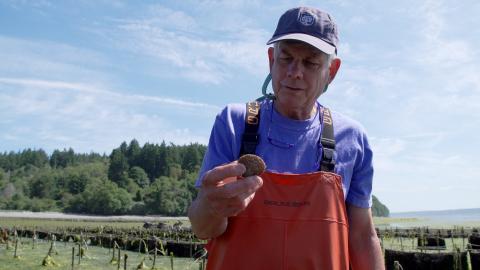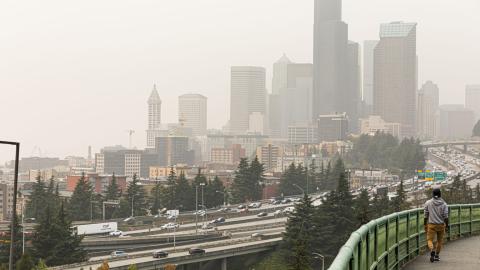Asthma affects more than 6% of U.S. children, making it the most common chronic disease in kids nationwide. It’s difficult to isolate any single cause, but one of the most common contributors is air pollution: Studies have shown that breathing air with high levels of fine particulate matter, nitrogen dioxide and other environmental pollutants can increase children’s risk of developing asthma. But it’s been unclear whether long-term, early childhood exposure to ozone, the pollutant that most frequently exceeds U.S. air quality standards, contributes to the disease.

Logan Dearborn, a doctoral student at the University of Washington, set out to find a possible link. In a study published April 2 in JAMA Network Open, Dearborn and collaborators identified a puzzling trend: Children exposed to higher levels of ozone in their first two years of life were significantly more likely to be diagnosed with asthma or wheezing at ages 4-6 — but researchers didn’t observe the increased risk of asthma at ages 8-9.
While the researchers couldn’t pin down the exact reason, possible explanations include the changing nature of asthma as kids age, which could lead to a drop-off in formal diagnoses, and the influence of other risk factors and pollutants on asthma as children’s lungs grow.
Costs and stresses for families
“It’s a puzzling finding,” said Dearborn, who led the research in the UW Department of Environmental & Occupational Health Sciences. “It’s something we spent a long time trying to consider, and I don’t know if we ever came up with a satisfying answer. But these findings are important. Even if we only see the effects early in life, there are still all kinds of associated health care costs and stresses for families. There are all sorts of larger contextual factors about having this chronic disease at any point in life.”
This study relied on data from the Environmental influences on Child Health Outcomes (ECHO) program, a federal research project focused on how a wide range of environmental factors affect children’s health. Researchers drew 1,118 participants from six cities, including Seattle and Yakima, who had low-risk pregnancies and completed validated surveys that asked if their children had been diagnosed with asthma or had experienced wheezing.
Researchers estimated exposure in the first two years of a child’s life using a model developed by co-author Dr. Joel Kaufman, a UW professor of environmental and occupational health sciences, of epidemiology and of medicine. They found that a relatively small increase in ozone exposure — 2 parts per billion — in a child’s first two years of life was associated with a 31% increase in asthma and 30% increase in wheeze at age 4-6 years. Asthma and wheeze risk at ages 8-9 was not found to be associated with their early life ozone concentration.
Adapted from the full story here: Children exposed to higher ozone levels early in life are more likely to develop asthma.




